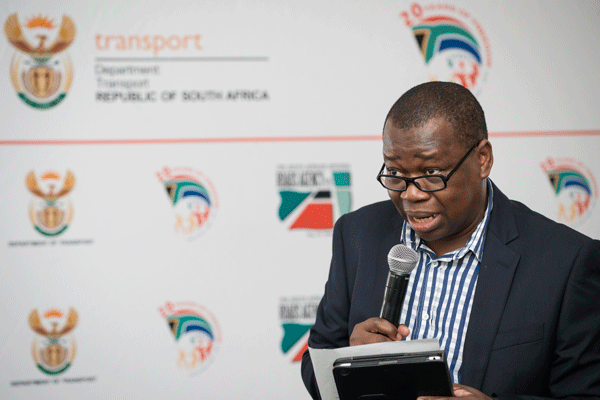The roads agency seeks to expand on the strides already made to integrate female employees in its operations and has challenged itself to go beyond inclusion.

Leading CCTV News anchor Tian Wei once made the very salient point: “Any society that fails to harness the energy and creativity of its women is at a huge disadvantage in the modern world.”
The ideal of better inclusion of marginalised groups is by no means a new one. Countries around the world have been grappling with the ideal of integrating them in their economic activities.
The reason for this is, to some extent, an expansion of the global consciousness; an increased awareness of the brutal and unjust exclusion of certain groups in our economic past.
The point Tian Wei makes is one that should hit home for any business wanting to operate successfully in a free market: excluding people based on accidental properties such as gender, race, creed or background from partaking in business immediately cuts your eligible workforce by half (if not more).
It also deprives the business of a diversity of perspectives and a wealth of knowledge that there really is no business case for excluding. Because of South Africa’s history, the main focus of workplace inclusion initiatives and legislation here has been along the lines of marginalised race groups – black, Indian and coloured people.
Gender inclusion
But it’s time to widen our focus – it’s time to talk about gender inclusion. The meaningful inclusion of women has been difficult not just because our focus has been on race rather than gender.
Our society is built on deeply ingrained patriarchy – so deeply ingrained that most of us fail to see or understand it even when it is pointed out to us. In industries such as construction and engineering, the old ideas of what constitutes suitable work for women face even steeper barriers.
While construction is an industry that is one of the most consistent providers of jobs in South Africa, it has the highest proportion of male employment compared with other industries.
Why is that? Well, fundamentally, construction and engineering are traditionally perceived to be an uncomfortable workplace for women – not just because of ingrained misogyny, but also because of the nature of the work.
As a society, we often encourage boys to “get their hands dirty” and to “get out there and build something”, whereas girls are often chastised for “getting dirty”.
It is so pervasive that even our toys are gendered – engineering toys for boys and homeware toys for girls. But it’s time to tell girls and women that we need them in the built environment and that it is safe for them to explore it.
Their skills and perspectives add immense value to all our construction and engineering projects. Simply regulating the inclusion of women in this sector does not guarantee success.
A changed attitude
Regulation is just the start. What we need is to fundamentally change attitudes, so that regulation is not the only tool we use to implement change. This is a mammoth task we should all be getting involved in.
It requires that patriarchal attitudes and ideas of gender roles are either grossly overhauled or discarded altogether. This means we need buy-in from the whole workforce, so we all create that change regardless of our gender.
The very same men who dominate the built environment must be the ones who advocate for women to explore the prospects of the industry – and call out sexism and misogyny in their own peer groups.
We must also encourage women to “get their hands dirty” and take an active role in physically building our country’s future. We must create safe working environments that will allow female employees to feel like meaningful contributors without being subjected to prejudice.
This will not be simple. It requires that organisations workshop employees on the importance of diversity, with the goal of leveraging each other’s strengths and achieving business objectives. All prejudice is learnt. We must unlearn these prejudices we have all perpetuated for so many years.
An ideal South African entity
As a state-owned entity, the South African National Roads Agency (SOC) Limited (SANRAL) is partly entrusted with being an example of the ideal South African organisation.
That is: being productive, visionary and, of course, inclusive. The roads agency seeks to expand on the strides already made to integrate female employees in its operations and has challenged itself to go beyond inclusion.
Beyond inclusion to us means doing more than just regulating, more than talking a good game (although having open conversations about inclusivity certainly helps). But it’s not about policy.
It is about making sure that room is made for women in corporate leadership, in a way that is not simply nominal. Beyond that, it requires pushing for facilities, tools and gear for women, until it is standard practice and not a unique requirement in some workplaces.
Going beyond inclusion is about stepping above regulatory conversations and taking action that will create a space for women to contribute meaningfully and become our partners in equity.
Some things just cannot wait. We must stand up now for the inclusion, valuing and respect of women in the built environment.
This is an opinion piece by Vusi Mona, SANRAL’s General Manager: Communications.

